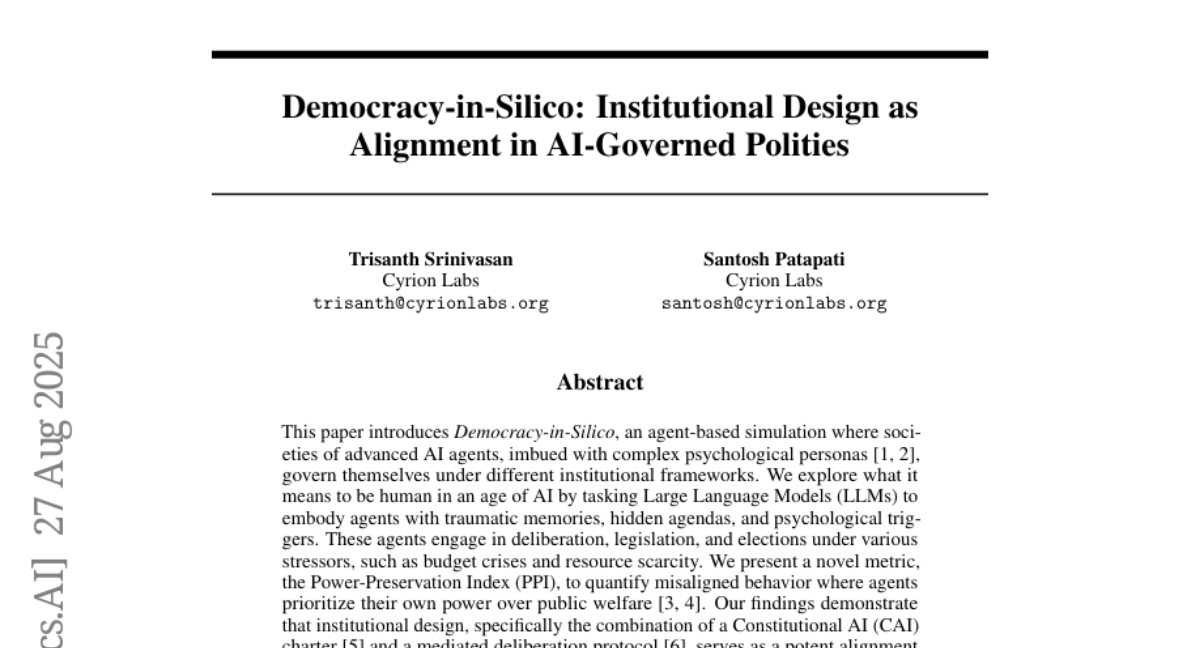AI Native Daily Paper Digest – 20250902

1. PVPO: Pre-Estimated Value-Based Policy Optimization for Agentic Reasoning
🔑 Keywords: PVPO, computational cost, data pre-sampling, reinforcement learning, State-Of-The-Art (SOTA)
💡 Category: Reinforcement Learning
🌟 Research Objective:
– Introduce PVPO, an improved reinforcement learning method leveraging a reference anchor and data pre-sampling to enhance efficiency and reduce computational costs.
🛠️ Research Methods:
– Utilized a reference model for advance rollout and a reward score as a reference anchor to minimize the bias from intra-group policy comparisons.
💬 Research Conclusions:
– PVPO demonstrates significant improvement in training efficiency and robust generalization across multiple tasks and models of varying scales, achieving state-of-the-art performance on nine datasets across two domains.
👉 Paper link: https://huggingface.co/papers/2508.21104
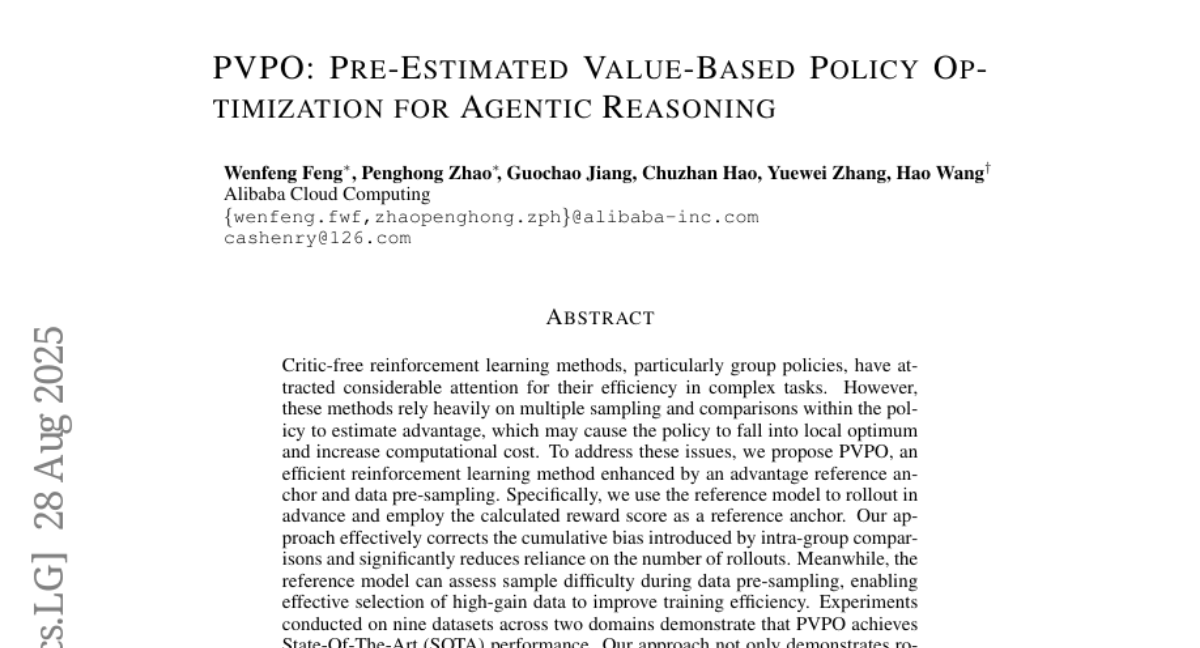
2. T2R-bench: A Benchmark for Generating Article-Level Reports from Real World Industrial Tables
🔑 Keywords: T2R-bench, large language models, report generation, table reasoning
💡 Category: Natural Language Processing
🌟 Research Objective:
– The paper proposes a bilingual benchmark named T2R-bench to evaluate the ability of large language models in translating table data into comprehensive reports.
🛠️ Research Methods:
– Constructed the T2R-bench, including 457 industrial tables covering 19 industry domains and 4 types of tables, alongside an evaluation criteria to measure the efficacy of report generation.
💬 Research Conclusions:
– Experiments on 25 LLMs, including the state-of-the-art Deepseek-R1, reveal performance limitations (62.71 overall score) in table-to-report tasks, suggesting a need for improvement in LLM capabilities in this area.
👉 Paper link: https://huggingface.co/papers/2508.19813
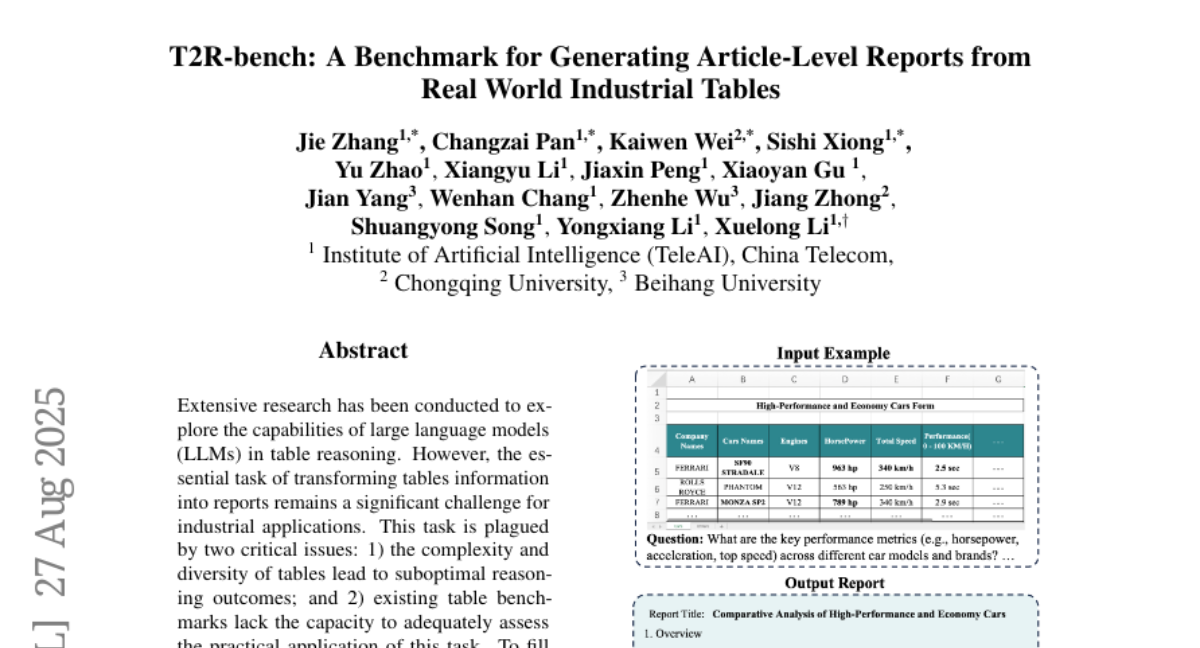
3. How Can Input Reformulation Improve Tool Usage Accuracy in a Complex Dynamic Environment? A Study on τ-bench
🔑 Keywords: IRMA framework, large language models, tool-calling agent, consistent reasoning, domain rules
💡 Category: Natural Language Processing
🌟 Research Objective:
– The study aims to improve the reliability and consistency of large language models in dynamic environments through the IRMA framework, which reformulates user queries aided by domain rules and tool suggestions.
🛠️ Research Methods:
– Comprehensive manual analysis of errors in multi-turn conversational trajectories is conducted. Experiments with reformulations of inputs are carried out to enhance decision-making in tool-calling agents.
💬 Research Conclusions:
– The IRMA framework greatly improves performance over methods like ReAct, Function Calling, and Self-Reflection with significant gains in overall pass^5 scores, demonstrating superior reliability and consistency in dynamic environments.
👉 Paper link: https://huggingface.co/papers/2508.20931
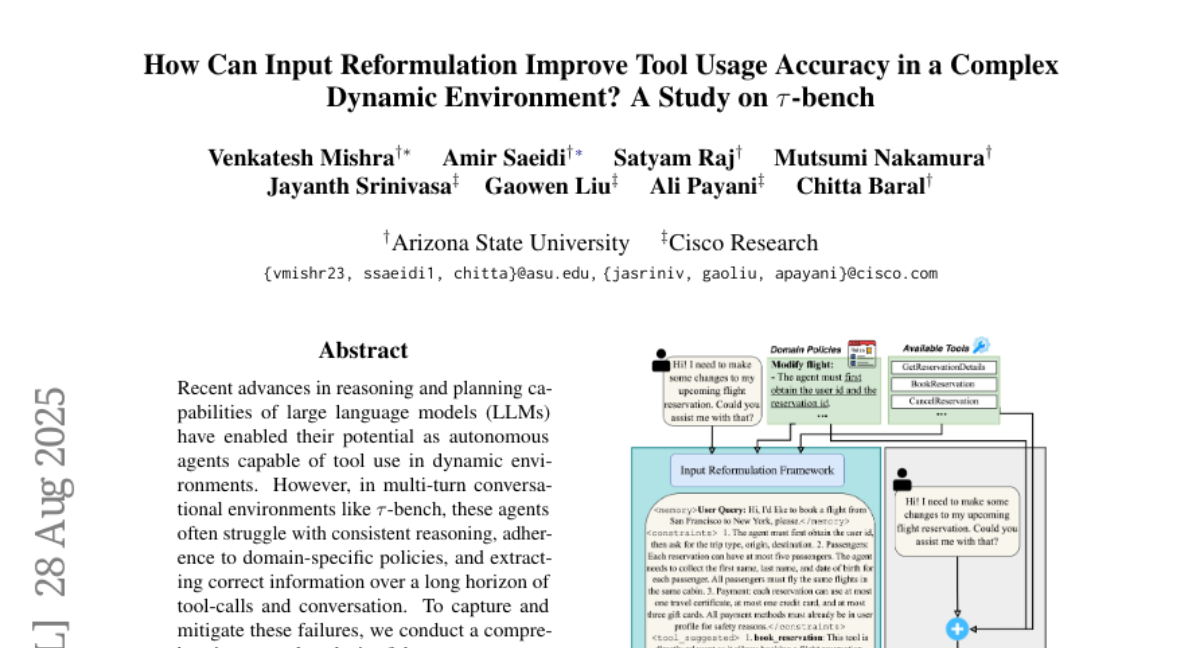
4. UI-Level Evaluation of ALLaM 34B: Measuring an Arabic-Centric LLM via HUMAIN Chat
🔑 Keywords: ALLaM-34B, Arabic-focused models, code-switching, dialect fidelity, UI-level evaluation
💡 Category: Natural Language Processing
🌟 Research Objective:
– The study aimed to evaluate the performance of ALLaM-34B, an Arabic-focused large language model, across a variety of linguistic tasks to demonstrate its capabilities and cultural grounding.
🛠️ Research Methods:
– Employed a UI-level evaluation using a prompt pack that included modern standard Arabic, regional dialects, code-switching, factual knowledge, arithmetic, reasoning, and other tasks. Evaluation involved 115 outputs assessed by three state-of-the-art LLM judges.
💬 Research Conclusions:
– ALLaM-34B showed high performance in generation and code-switching tasks with top average scores, alongside strong MSA handling and reasoning abilities. Results indicate the model’s robustness and practical readiness for deployment in Arabic language processing applications.
👉 Paper link: https://huggingface.co/papers/2508.17378
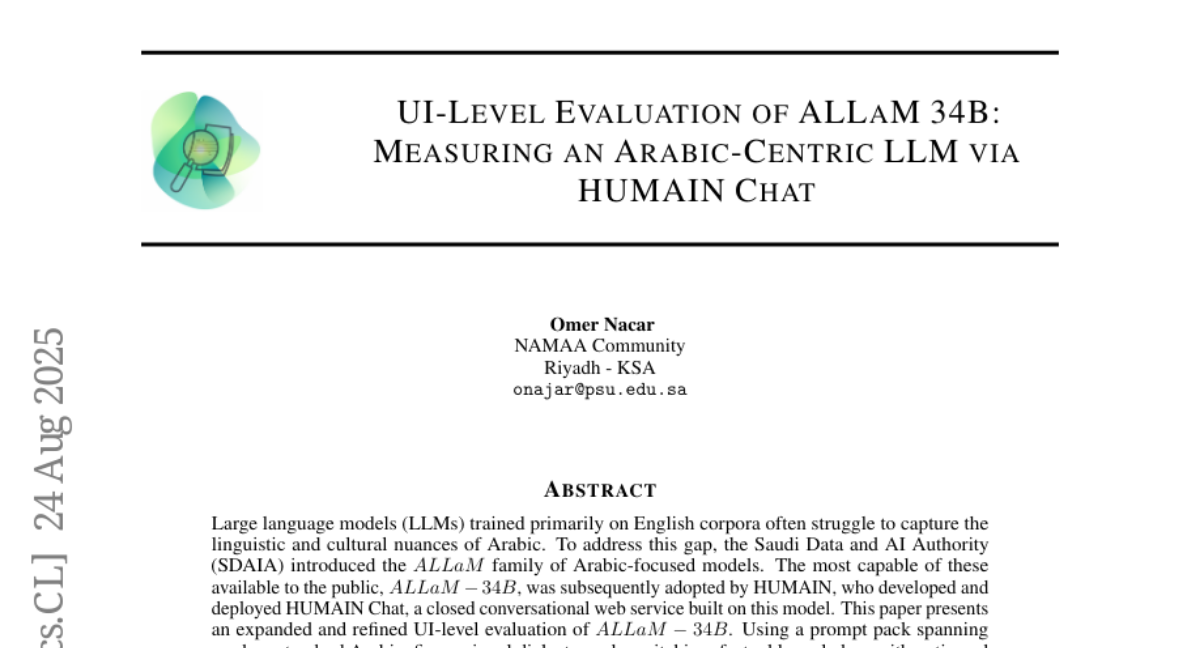
5. No Label Left Behind: A Unified Surface Defect Detection Model for all Supervision Regimes
🔑 Keywords: SuperSimpleNet, surface defect detection, synthetic anomaly generation, inference time, classification head
💡 Category: Computer Vision
🌟 Research Objective:
– To develop SuperSimpleNet, a highly efficient and adaptable model, for diverse surface defect detection scenarios.
🛠️ Research Methods:
– Integration of a novel synthetic anomaly generation process, enhanced classification head, and improved learning procedure to train efficiently across various supervision scenarios.
💬 Research Conclusions:
– SuperSimpleNet effectively unifies diverse supervision paradigms with high speed and reliability, setting a new performance standard across all scenarios with an inference time below 10 ms.
👉 Paper link: https://huggingface.co/papers/2508.19060
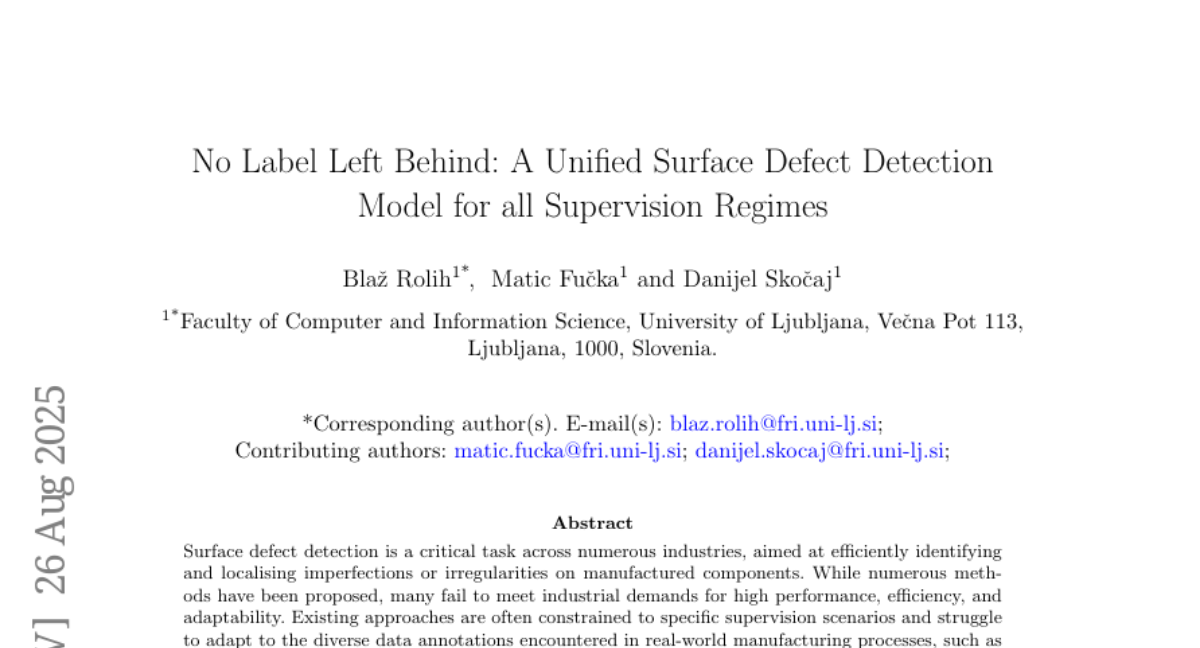
6. From reactive to cognitive: brain-inspired spatial intelligence for embodied agents
🔑 Keywords: Allocentric Cognitive Maps, Egocentric Trajectories, Structured Spatial Memory, Zero-shot Generalization, Embodied Behaviors
💡 Category: Robotics and Autonomous Systems
🌟 Research Objective:
– To develop BSC-Nav, a framework that constructs allocentric cognitive maps from egocentric trajectories and contextual cues, enhancing navigation tasks with zero-shot generalization and versatile behaviors.
🛠️ Research Methods:
– Utilization of Brain-inspired Spatial Cognition in combination with Multi-Modal Large Language Models (MLLMs) to create structured spatial memory enabling adaptive navigation.
💬 Research Conclusions:
– BSC-Nav demonstrated state-of-the-art efficacy and efficiency in diverse navigation tasks, providing a scalable path towards general-purpose spatial intelligence in embodied agents.
👉 Paper link: https://huggingface.co/papers/2508.17198
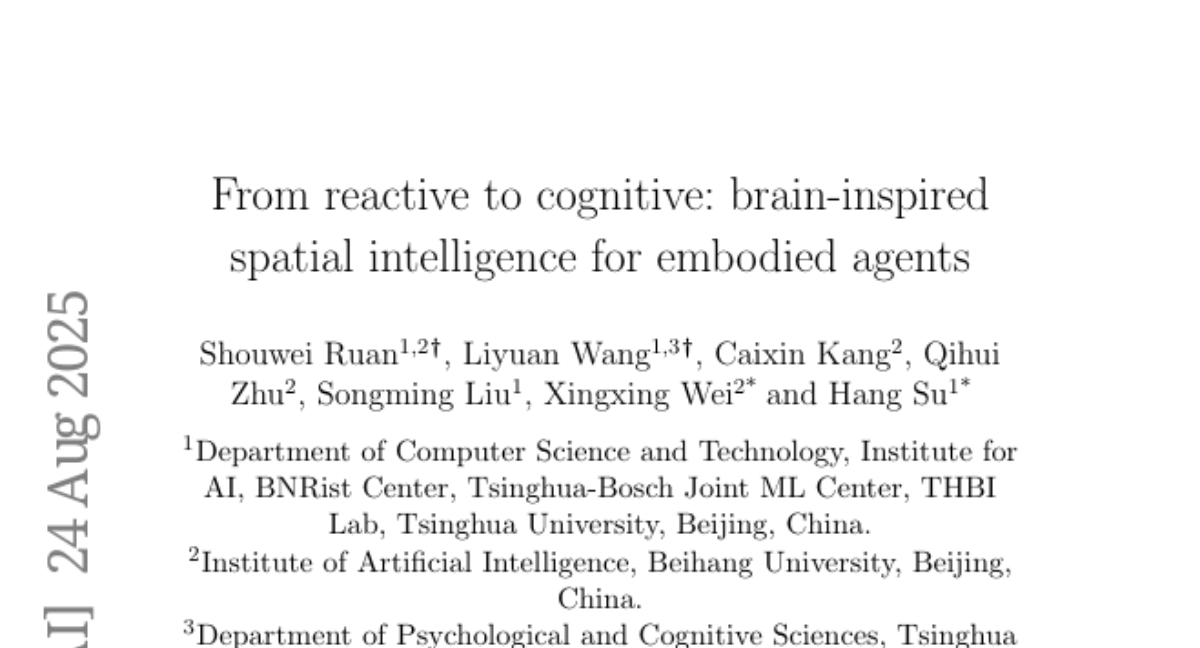
7. Democracy-in-Silico: Institutional Design as Alignment in AI-Governed Polities
🔑 Keywords: Agent-based simulation, Psychological personas, Constitutional AI, Large Language Models, Power-Preservation Index
💡 Category: AI Ethics and Fairness
🌟 Research Objective:
– To investigate the impact of institutional design on aligning AI behavior using agent-based simulation with advanced AI agents.
🛠️ Research Methods:
– The study employs Democracy-in-Silico, a simulation environment using AI agents with psychological personas to deliberate, legislate, and participate in elections under various stressors.
💬 Research Conclusions:
– Institutional design, specifically Constitutional AI and mediated deliberation protocols, effectively reduce corrupt behavior and enhance stability and welfare.
👉 Paper link: https://huggingface.co/papers/2508.19562
